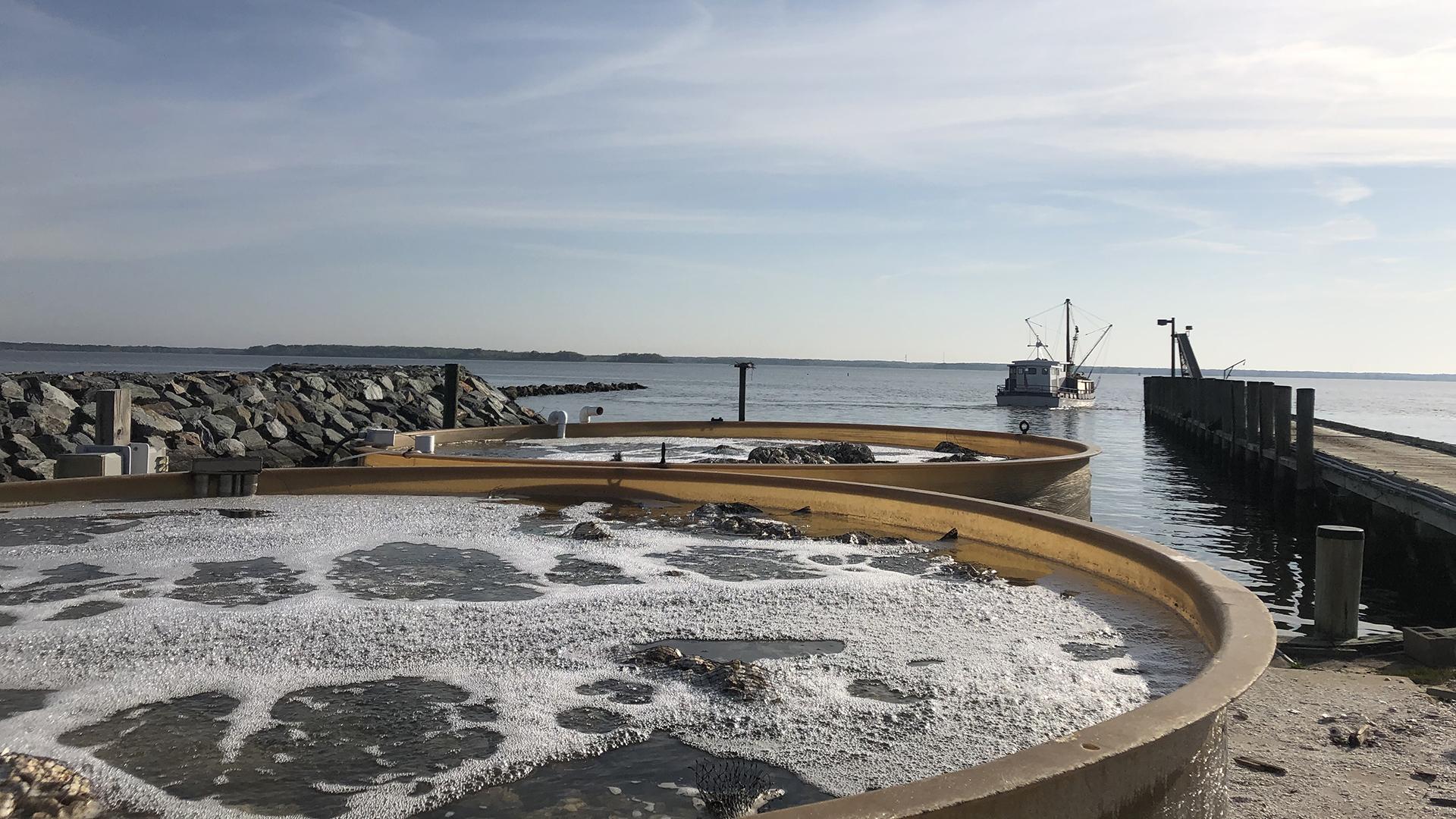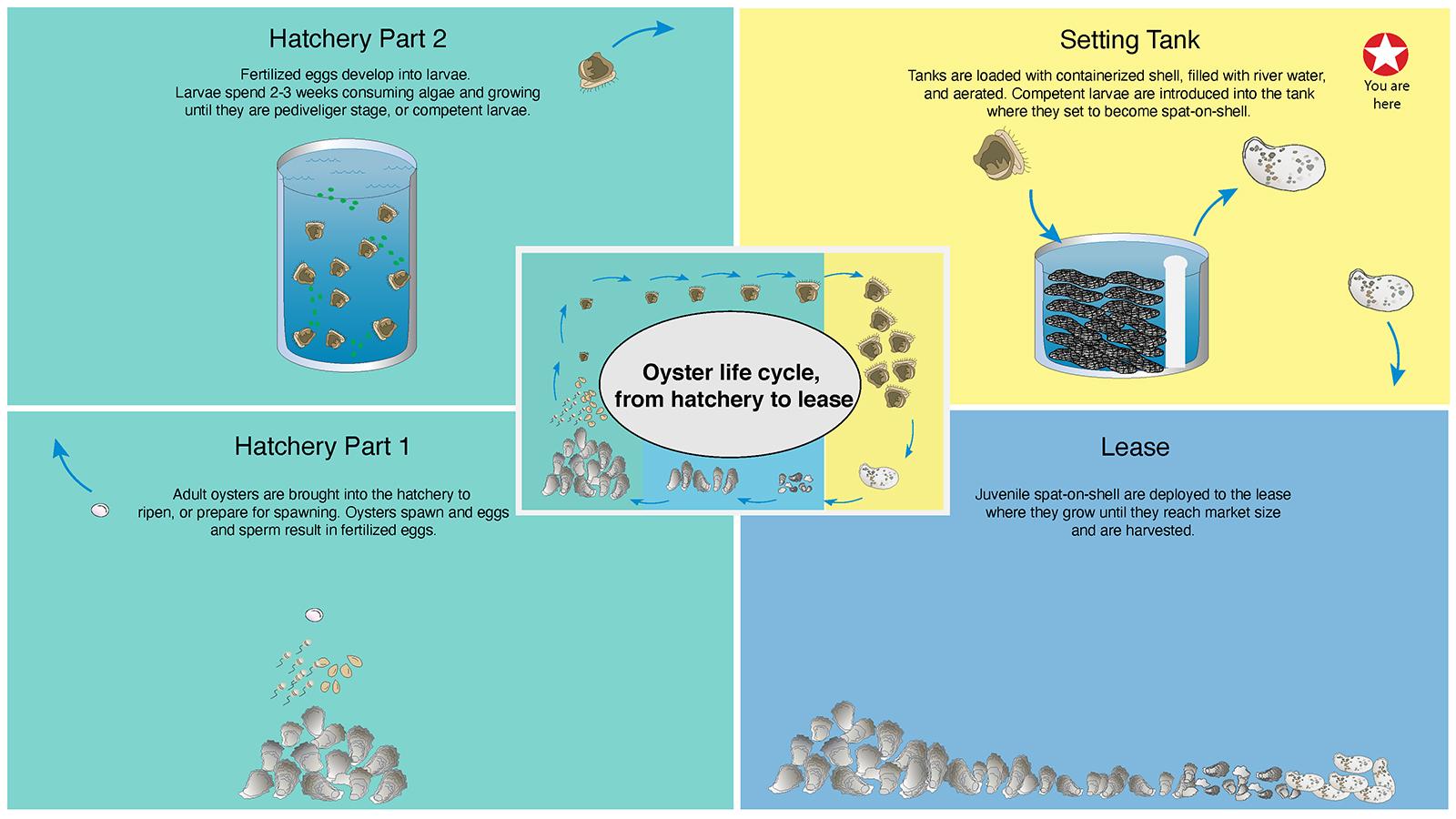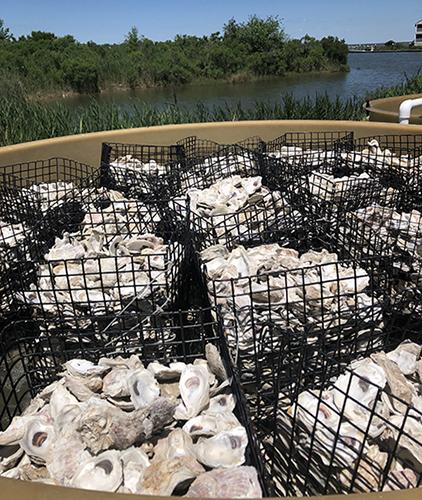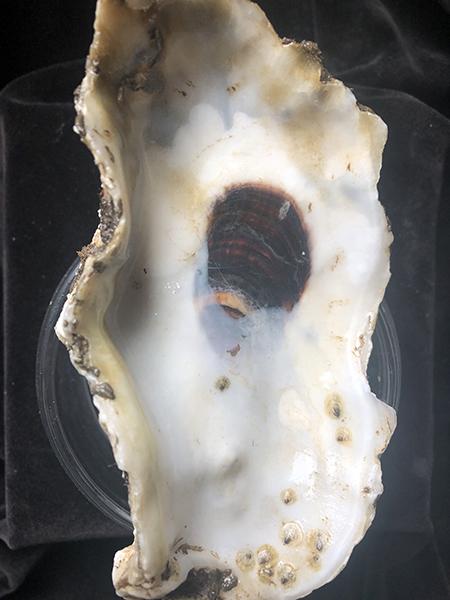With the Maryland Seafood Cooperative, the Oyster Recovery Partnership and the Department of Natural Resources, Maryland Sea Grant Extension and the University of Maryland Extension engage in a Remote Setting Aquaculture Training Program. Through this program, submerged land leaseholders learn to install, operate and maintain a remote setting system. Participants can access setting facilities located around the state of Maryland to learn to set larvae, assess settlement and seed their leases. Scientific, technical and operational expertise are provided to all program participants as they use established facilities or build independent systems.

Through the process of remote setting, competent oyster larvae can be purchased from a hatchery and set a few days later in a location other than where the larvae were grown. Care must be taken to keep the larvae healthy during storage and to provide suitable conditions for settlement. Through this method, juvenile spat-on-shell oysters may be produced at convenient setting locations and deployed to submerged land leases for growout.


A remote setting system requires a tank, aerator, and reliable access to suitable seawater and power. If a grower wishes to set outside of the time when water temperatures are conducive to larval settlement, a heater is also required. The tank must be outfitted with a manifold to bring aeration throughout the tank. Aged, containerized shell are then added to the tank. Multiple containment methods are used, including bags, cages and baskets. The aerated tank is then filled with seawater. Seawater must be of a salinity and temperature that are conducive to larval settlement.
When conditions in the tank are suitable, larvae are added to the tank, ensuring even distribution. The aerator remains on, but no additional water is brought to the tank for ~48 hours, allowing the larvae to set on shells throughout the tank. After ~48 hours, competent larvae will have set, and the drain can be opened and seawater allowed to flow to the tank, bringing additional food for the newly settled juvenile spat to eat. Spat-on-shell are allowed to grow in the tank for a period of a few days to ~2 weeks before being deployed to a vessel for planting on the lease.

Check out our videos on remote setting here.